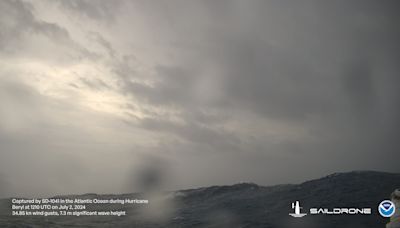Search results
In meteorology, a cyclone (/ ˈ s aɪ. k l oʊ n /) is a large air mass that rotates around a strong center of low atmospheric pressure, counterclockwise in the Northern Hemisphere and clockwise in the Southern Hemisphere as viewed from above (opposite to an anticyclone).
Search…. Interactive world weather map. Track hurricanes, cyclones, storms. View LIVE satellite images, rain radar, forecast maps of wind, temperature for your location.
Tropical cyclone information track map showing storms currently tracked by the Canadian Hurricane Centre.
Oct 19, 2023 · Called hurricanes when they develop over the North Atlantic, central North Pacific, and eastern North Pacific, these rotating storms are known as cyclones when they form over the South Pacific and Indian Ocean, and typhoons when they develop in the Northwest Pacific.
16 hours ago · Beryl is now a Category 3 storm, with maximum winds of 125 mph, the National Hurricane Center said in its 2 a.m. ET update. After slamming Jamaica, the storm is 110 miles southeast of Grand Cayman ...
1 day ago · tropical cyclone, an intense circular storm that originates over warm tropical oceans and is characterized by low atmospheric pressure, high winds, and heavy rain.
A tropical cyclone is a rapidly rotating storm system with a low-pressure center, a closed low-level atmospheric circulation, strong winds, and a spiral arrangement of thunderstorms that produce heavy rain and squalls.
20 hours ago · Central North Pacific (140°W to 180°) Tropical Weather Outlook. 800 PM HST Wed Jul 3 2024. There are no tropical cyclones in the Central North Pacific at this time.
Nov 16, 2023 · A disturbance that could eventually become a tropical storm formed in the Caribbean Sea on Thursday, and forecasters said it is expected to bring heavy rain to Jamaica and parts of Cuba, the...
3 days ago · A tropical cyclone is a rapidly rotating storm that begins over tropical oceans, and they can vary in speed, size, and intensity. Tropical cyclones are the second-most dangerous natural hazards, after earthquakes.


